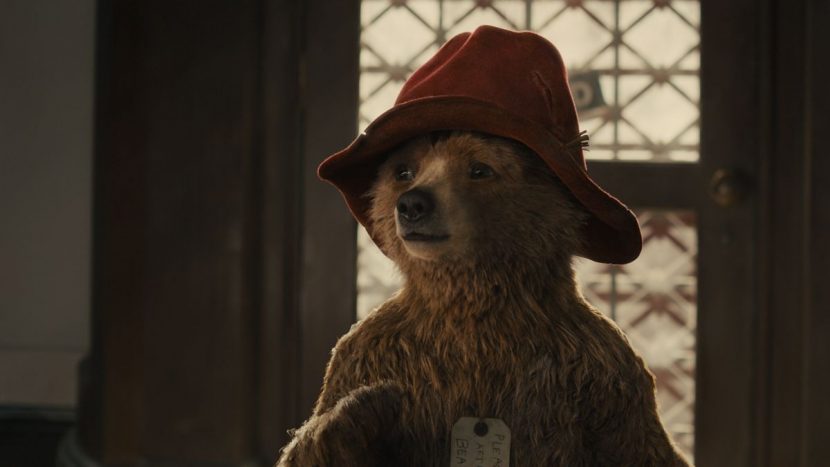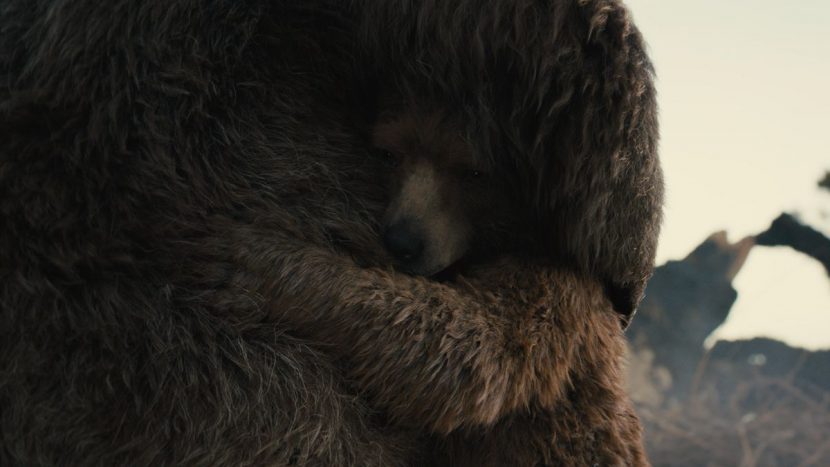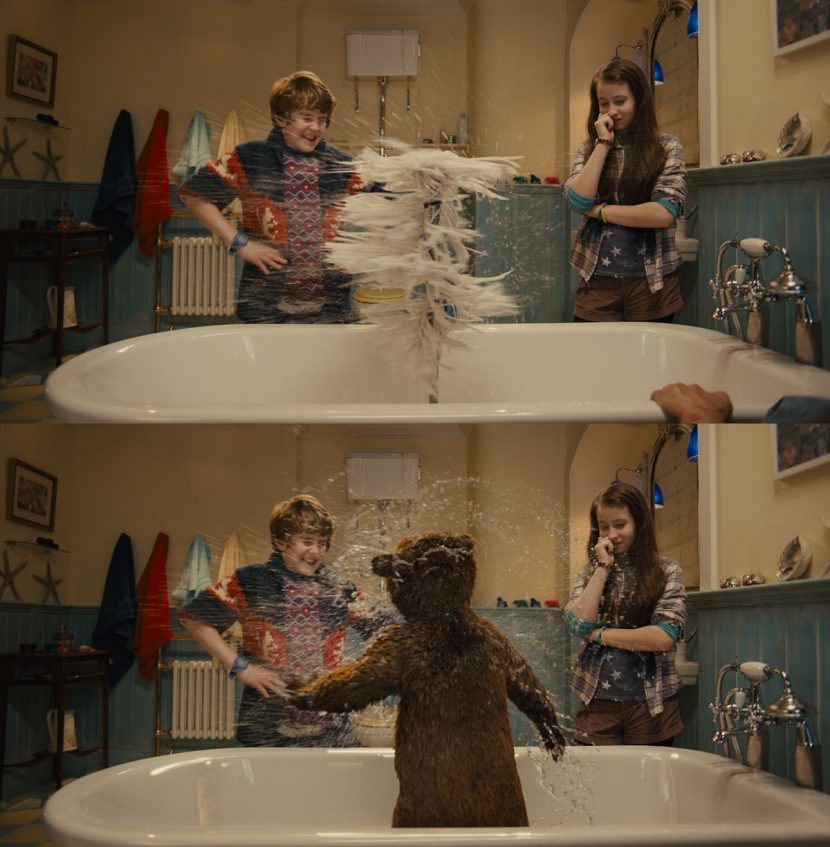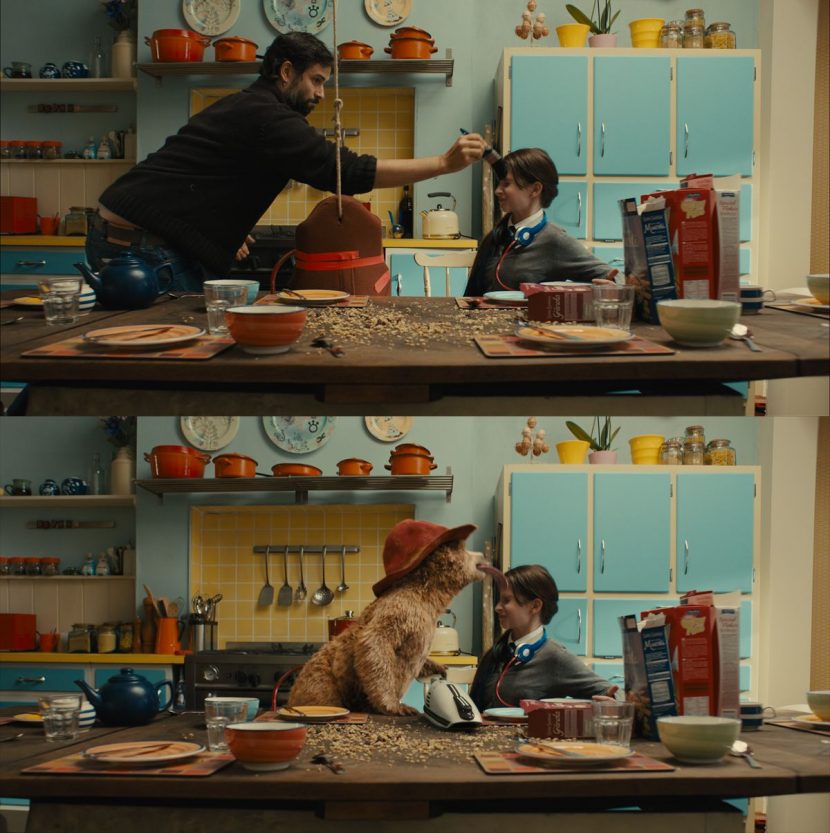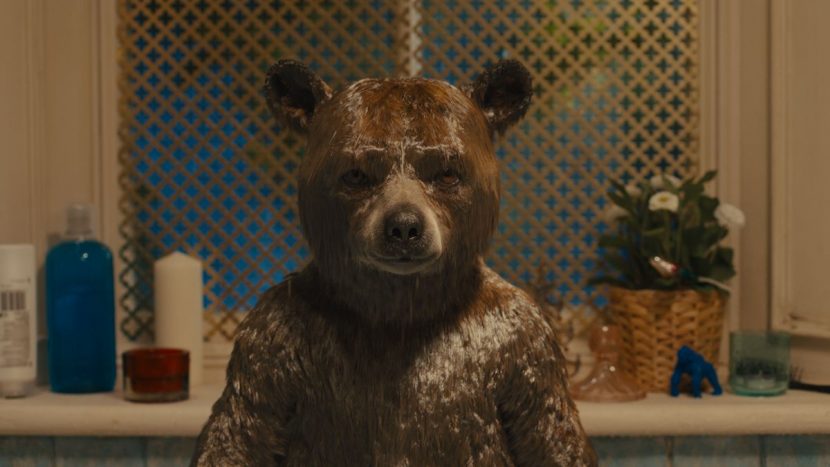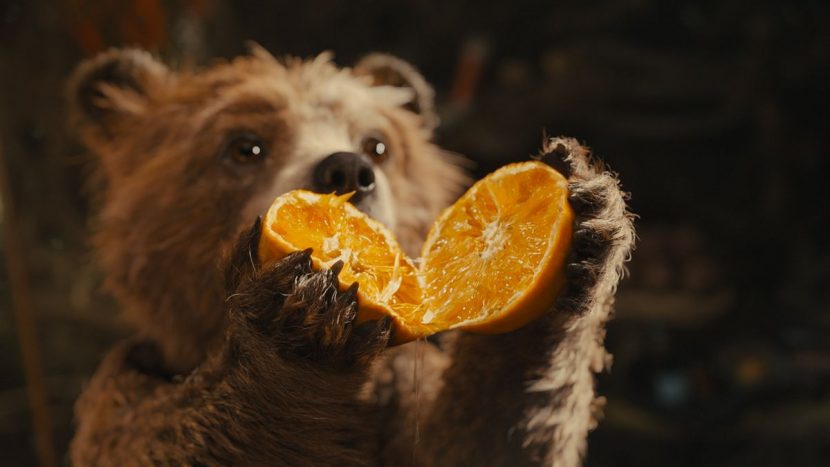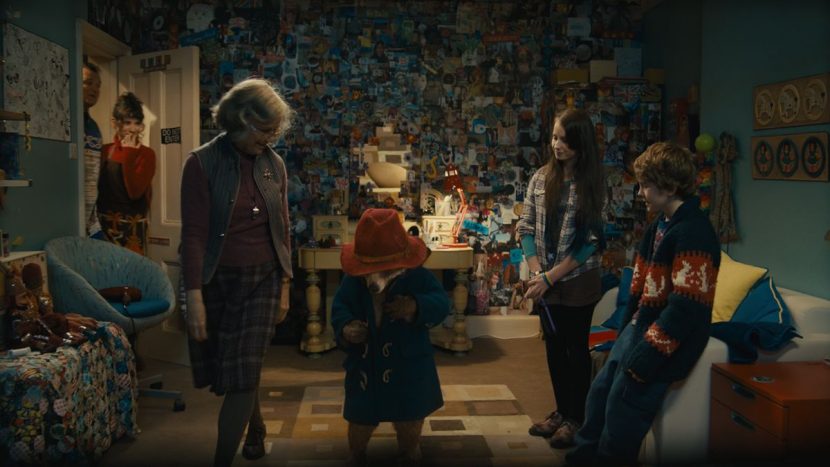Framestore animation supervisor Pablo Grillo delves into the art of animation behind bringing the star of Paddington to life, in this in-depth Q&A with fxguide.
Behind the scenes at Framestore.
fxg: How do you actually get started with a character like this? He has characteristics something in between a bear and a human. It also has a long history of association with a storybook character and a cartoon. What did you firstly look at to try to get into the character’s mind?
Pablo Grillo: Well, that’s interesting. I think the first thing was through the design process. Just really the imagery. I think you’re right. The association is very strong. Lots of people have got a very clear idea of who he is.
I think we had that sense as well, it being part of our pasts. So looking at the imagery deeply and trying to sort of get close to that feeling – what’s that essence? Again, I think it’s more of a feeling than anything else, so that when we underwent the design processes it’s kind of in there. You are always searching for something that’s along that line.
I think the thing that’s most difficult is trying to do something photoreal and maintain that feeling. It’s important. One of the directions to go into real bear world, I think that’s an essential to make him believable in a live action film.
But trying to retain that simplicity, you know, we were looking at pictures of a cuddly cartoon character. Two dots for eyes and a little smile. Inherently, that was Paddington. You could feel the charm, the chaos and the quirkiness of her personality in that image. I think trying to retain that was key.
So when we started investigating forms, real bear forms, heads, looking at real bears and finding images that had personality and also looking at cub faces, and other animals as well. Not just bears, but things you felt you could steal from. That would retain the simplicity of form. You could then sort of hopefully convey a similar charm even though you’re detailing in something far more detailed, far more complex, at the risk of becoming kind of, I guess, becoming more grotesque dealing with real animals’ shapes and teeth and gums and details. The two eyes and the smile to one side and the general shape of his face that we’re used to.
But also his poses. I think that’s important. Some of the very early investigations before we’d even built a model was just really going into attitudes and things, like, “Well, that’s Paddington. That isn’t. That is.” We start really learning about who he is, how he carries himself, and actually realizing that it’s a character of sort of great economy as well, and simplicity.
He doesn’t really do much, doesn’t express much facially. Doesn’t sort of give himself away. I think one of the things we were looking to do was maintain a level of sort of inscrutability. His range is quite considered and slight. It doesn’t go for the obvious thing. It doesn’t yell, “Ah!” Or smile, or show you a lot of exuding emotion.
We kind of looked also at a lot of things that had similarities. Comedians of the past. People like Buster Keaton and people who were sort of out of place but expressed that curiosity that Paddington has, and also that optimism. Keep going through a bad situation. The mannerisms that we could inject into this bear and they would all express those truths. Everyone is familiar with his character.
fxg: Right at the beginning of the process, often what happens is you do a couple of test scenes or a major test scene that helped sell the character. Did that happen on this show, and what was it?
Pablo Grillo: It did. I mean, we have several. We sort of mocked up a form. We did little tests of shots of a human walking down a street, and just within that had Paddington holding hands. We wanted to get a sense of how he fitted into this human world. Get a sense of his proportion, speed.
I think we wanted to make something that eluded to a real bear, but without being inhibited in any way. Without inhibiting an emotional performance through bear forms. So it came down to discovering an anatomy that would elude to give the signals of a bear, but be very much bipedal.
Certainly, those early tests walking down, expressing politeness and curiosity, that sort of naive child-like mannerisms. That informed all those things. Character, form. [We] started getting a sense of even just the simpler details of how long do we need to make his arms so that he can actually do this without being inhibited so he can doff his hat and do things like that.
We had a variety of small tests. With each step we would go further and discover new things. But, yeah. There were little tests of him walking down the road. Tests of him drinking tea out of a pot and tests of him doffing his hat in a variety of ways just to get a feel for who he was and what shape he needed to be.
In those tests we started sort of drawing closer to an anatomy that worked. I mean, one of the things that Paddington is, it felt like there was a nice conflict between his animal self and his very mannered and trained self. Paddington was not so much an animal as a person. I guess sort of a lost tribe from Peru, an undiscovered people that happened to be bears.
But he’s incredibly mannered and incredibly polite, and had this sort of sense of what it was to be an Englishman and what it was to be. That’s how he would then fit in. So he’s incredibly mannered, but could never resist his sort of child stroke animal urges to sort of taste things, taste everything, touch everything. So we wanted to show that and make sure that when his animal reflex came out, like climbing up the bannisters, climbing up something, climbing up into his bed in the rafters, that you felt like there’s a bear there. Something very natural. His state of nature. His animalistic, his quadrupedal. He can move around with that dexterity.
So we wanted to make sure that there was an anatomical sort of aspect that would give you those signals as a bear.
fxg: One of his standout features of course is his eyes and the facial animation and how subtle that is. What kind of experimentation did you have with that?
Pablo Grillo: In terms of the facial rig, we’ve got a format that now we use, which is very much based on the FACS breakdown of muscles, facial muscles. I think the artistry comes into how they are balanced out on that particular character in one way or another.
In terms of Paddington, I think the big thing was keeping that range slight, again. It was very easy. I think more than developing the rig, it came down to the animators becoming used to, I think, fighting their urges to pull a very obvious expression or something that just broke the character. I think it was very easy to break the character and pull yourself out of what Paddington was meant to be.
In a way, that had to be policed carefully. I think that after a while people got into what that was and it slowed clearly. Essentially, I think it was almost having to reset once you’ve gone too far with a piece of a facial animation. Like, okay. Now let’s reset. Let’s start again, clear it go from neutral and just do what is essential from a neutral state. That was more where Paddington was.
I think one of the hardest things is smiling. Dealing with things like that. I’m not sure why that was. I think that one thing we learned is Paddington is not a character who smiles a lot. He’s very introspective. Very serious, considered. So there’s more of a little furrow to the brow. He thinks about why things are going on, why things are happening. So a very serious little boy.
So he doesn’t smile a lot, which is odd. I think you look at it from a marketing perspective and everyone wants to see a little smile on his face. But the other thing was, getting a smile out of his mouth is quite difficult. I’m not sure if that’s because an animal mouth doesn’t naturally help you smile. It’s not something that a smile looked good on. It’s not something that we see a lot, I think… A muzzle like Paddington’s got.
So what we tried to do was sort of build [and] use the natural form of the muzzle mouth. You see animals and they look like they have a smile in them, just in their neutral gaze, depending on the angle of the head, and we tried to use that to convey the sweetness of the mouth or the smile rather than actually pull a smile. I think as soon as you contrive that it sort of, again, broke the character. Became something else.
So, again, everything was extremely difficult. It was really just more through, “Okay, let’s reset the face and let’s find it through an angle against the camera. Find it through something gentler,” you know?
The eyes we tried to be careful with things like the whites of the eyes, not to show that too much. You show it at the right times. We tried to construct the eyes. We were initially trying to maintain homage to this image, which the eyes are two dots. We wanted, in a way, the eyes to feel full, full of iris, so that you didn’t really break out of that and create, again, something that looked a little perhaps too scary.
So we tried to create the eye, fill the eyes out so they felt as round as possible. As much as you could within an anatomical framework and then maybe reveal the eyes when the eyes look sideways, when there’s a surprise in his face. That would have a bit more of a punch to it, because you’re not always seeing those whites. You’re not always seeing those pupils and that eye direction as clearly as you might on another character.
fxg: So at this point you’ve looked into how you would approach the animation. You’ve looked at reference. But then how did that actually translate into filming? Was there a stand in person for Paddington each time?
Pablo Grillo: On set there were a variety of techniques. The best part… I mean, a lot of the Paddington shots are fairly stationary. So we had an eye line marker. We wanted to avoid painting a plate. A lot of clean up. So, where possible, we used an eye line marker for minimum quick clean up.
In some instances we would rehearse the shot with a physical comedian. There was a chap called Javier, who was a big part of working out the slapstick routines. A wonderful performer. He would help us work that stuff out offline, but in some shots he was there just to bounce off of a live action actor if it was an instance where we feel it’s easy to remove him.
For example, in the tea room where Mr. Brown is talking to the bear, in the wides, the two shots, because we could split screen easily and lose Javier. We would have Javier there playing off against Hugh Bonneville. That helped Hugh enormously.
Then, in other instances where there was movement, where there would be a camera move and a lot of actors, a lot of eye lines, perhaps more complexity in terms of choreographing the placement for Paddington in the space, we had a small person called Lauren. She was the same height as Paddington and she would serve for the rehearsals. Then we would do a clean pass and often use a clean pass. But at least we were able to go through rehearsing the shot, finding the parameters of the shot with Lauren.
We had also some full sized stuffies of Paddington, which we could use to line up the cameras. But generally, where possible, we just tried to eliminate everything and have a stick for reference once we had rehearsed.
For the bigger bears, we used actors. It was something we could cover up. It’s just a lot easier. When we were out in Costa Rica we had a stand in for each bear. That’s where we shot the Peru scenes. We knew that we would be able to cover those guys up more easily with a CG bear. It just gave something. It makes the shooting process a lot easier. I think it’s a struggle when there’s absolutely nothing to shoot against.
fxg: What did you visualize with while animating – did you feel you needed to see something in your animation setup that was photorealistic?
Pablo Grillo: Well, and that’s tricky. I mean, it was hard. We’re working in a viewport. It’s hard to create something that looks as rich as that final render. It is a problem. I think we were dealing, facially, with such subtle detail, nuance, particularly in terms of how the expression felt and looked in any given moment. More than the motion itself.
What we used was really just a grayscale. I mean, it was sort of a beige plastic render, a volume of the fur, representing the fur. There was nothing mind blowing there. It was really just that. I think often, just to get a sense of the movement on the face, we would look at that in playblast renders so that you could sort of see how the skin was moving around and make sure there was nothing bad going on.
We were very lucky. We never, I guess, had this before: I think it would have been a different story without it, but we were able to do some light weight renders every evening, QC renders, which would give us a pretty low res indication of what the fur looked like in the lighting conditions.
That was essential. So we would at least be able to sort of cross reference. I think pretty soon we understood what translation might come across. But that was essential, really. If something relied on a facial expression heavily, a shot, and how that particular pose looked, we would probably start with firing off a bunch of tiny iterations on that pose and render that out just to pick, “Okay, that’s the one where the eye line works just right,” and we worked the animation around that chosen pose just to make sure that we hit it.
I think we only had one shot at rendering the fur properly. So it was important just to find ways just to make sure that we had hit the nail on the head. But in the end the renders reveal a whole lot more that you go, “Crikey! I wish we had seen that before.” But at least we had some sort of step of previewing with the fur on. Obviously the look was completely different to what we were actually working with on the viewport.
fxg: Does that mean when you do come to working with your CFX team that at some point, when you see finished fur renders and things like wind hitting fur and water, as animation director, do you get to review that and make any comments about that part of the process?
Pablo Grillo: Absolutely. I mean, I think it just gets to a point where you are running so many shots at such speed. You can’t stall every stage of the process for every shot. You have to keep the shots flowing through. So, I guess, perhaps on key shots where you think, ‘this is important,’ yeah, you would intervene. But generally [it was] wonderful. You trust everyone to do their job well and cross your fingers. It all works out. Particularly in those the shots where Paddington is gonna look completely different, is when there’s water all over him or when there’s wind blowing through. It really alters the form. So I keep an eye on the development of the shots and where you spot something that’s maybe breaking the feel of the character. You get on the phone and have a conversation. It’s all quite an organic process, really.
fxg: Is there a particular sequence that you enjoyed overseeing? I really loved the tea room clip, actually. It’s one of my favorites. It’s simple, but there’s so much going on.
Pablo Grillo: I have to say, that’s really one of my favorite scenes as well.
fxg: You had mentioned it a little bit. Tell me more about how you really oversaw that scene.
Pablo Grillo: I love that scene. At some point that scene wasn’t gonna be in there. I’m so glad it is. It’s the one that epitomizes… It’s out of the books. It’s probably the most Paddington-esque, truthful to Paddington scene that there is in the film. It’s lovely.
In terms of doing it? Let’s see. That was one that we didn’t previs. We shot straight off. We rehearsed some of the gags. Again, we worked with a guy called Javier Marzan, who really helped us devise some of the physical humor. So it was a great way for Paul, the director Paul King, to sketch the order of events, the gags, the joke and see it come to life.
So we had rehearsals with him and Hugh going through the routine, and also rehearsals going through the stuff once he’s up on the table and he’s got the cup on the foot. So he would go through some ideas in real time with Paul directing. We would go off and we tried them off with a bear. It was obviously a very different proportion. We’d then ask, “Can we get him on the table? How does he feel in that space? What’s the size?”
You get to a point where you go, “Well, you know, he’s not gonna sit on the table at that point. It’s gonna consume too much space and the eye lines all fall apart. Let’s sit him there.”
So we go through a process of sort of back and forth and figuring out, firstly, what’s funny, [and] secondly, how is that best staged with Paddington’s physicality in the space? Then you go on set. You shoot. Again, there are variables, always, from the set, which you just have to deal with. So I think my role is hoping to highlight maybe what has changed. What we need to alter of the staging in order to still get the gag with the changed parameters of the set.
Then, really, the rest is those guys. The rest is Hugh Bonneville and his incredible reactions. I think that’s something that we’ve got to take our hat off to. A bit part of the film is Hugh and his wonderful comic timing, which is just a huge part of what brings Paddington to life in those situations.
So then after that it just becomes a sort of heavy process of editing as well. That timing felt very important. So in terms of putting in a block, building the action, and there’s a huge amount of bounding across between the animation department editorial back and forth until the beats slot just in the right place.
Then after that I think there’s, the animation. They are sort of working out the little performances, the nuances. The thoughts. It’s the classic process. The animators sit down and we work it all out.
It’s crafting a performance on top of that, the stuff that you don’t have a performance for, and tying it all together. That’s sort of the beauty of animation. I think the wonderful thing is that Paul King really got into that and really kind of enjoyed the process. He bought into the process. It was really enjoyable to work with him on that level.
fxg: What were the challenges of making sure Paddington interacted with the other human characters, including in the tea sequence?
Pablo Grillo: Well, that’s something that sort of limits what you can do. That scene, for example, is a great case in point. I think originally Paul wanted Paddington to sit on the table to drink the tea. When we saw how big the table was, I think one of the things that would have killed it was getting… If Paddington got so close to Hugh, Hugh’s eye lines and reactions, that sort of personal space that Paddington gets into, would have to work. Otherwise the illusion would be dead. It would kill it.
So we talked about… We altered the framework of what we planned to push him back a bit. I think if those eye lines don’t work, it’s over. I think often, if there was a possibility, you would create cues. You would knock stuff. You would try and create something that an actor could… Just at least generate some movement or something that then you can feed back from as an animator. That creates the tensions between the two components.
I mean, a lot of that stuff comes down to just making sure that you don’t make it too… When you shoot, you have to leave yourself open to be able to make those things work in the animation process. I think if you try and get too ambitious, a lot of stuff is very hard to control in the shoot. Again, I think if we tried to do something very close quarters, you’re suddenly presented with a whole new technical problem of, how do we plan Paddington’s action and make sure we’re hitting the right..? At another point we really just wanted to pass a lot of objectives between Hugh and the beat during the routine of drinking the teapot and making a cup of tea.
Actually, I think you’re digging yourself into a bit of a well with having to perfect that. In that case we chose to keep a bit of stuff. There are other opportunities to put it in there. I mean, putting the jacket onto him was probably the most ambitious point of interaction – the moment where Ms. Bird puts the jacket onto Paddington. Things like that, which you can orchestrate and engineer. It’s not going to get in the way of the performance, but they absolutely tell the audience that Paddington is there. He’s a physical presence. One of the family. Those are things that you can really sort of work out well, and they are gonna feel the illusion.
Again, I think Paddington licking Judy’s face and things like that. The water being sprayed over the kids. There are areas where you just want to insert just enough interaction between him and the live action actors that, you know, “Christ, he’s physically real. I believe him.”

